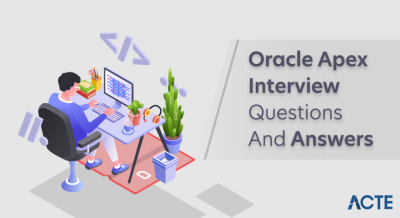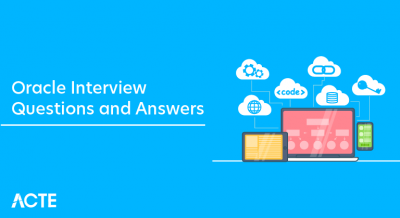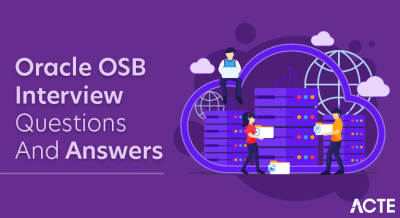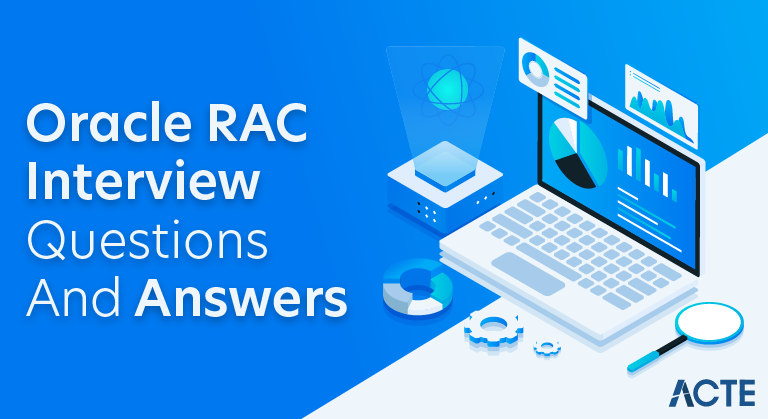
In an Oracle RAC (Real Application Clusters) interview, candidates are likely to encounter a range of questions covering various aspects of Oracle RAC architecture, features, and best practices. These questions may include topics such as cluster configuration, cache fusion, high availability, resource management, and performance optimization. Candidates should be prepared to discuss their knowledge of Oracle RAC components, its role in distributed databases, workload balancing, and how it handles failures and scalability. Additionally, questions about Oracle RAC-related tools, monitoring, and troubleshooting techniques may be part of the interview. Familiarity with Oracle RAC best practices and the ability to articulate how it addresses specific business challenges can also be crucial.
1. What is Oracle RAC?
Ans:
Oracle RAC (Real Application Clusters) is a database clustering solution that enables multiple servers (nodes) to operate as a single system, providing high availability and scalability for Oracle databases. It allows simultaneous access to a shared database by multiple instances running on different nodes.
2. How does Oracle RAC handle online table reorganisation?
Ans:
- Oracle RAC handles online table reorganization operations similarly to single-instance databases.
- Online table reorganization can be performed using features like DBMS_REDEFINITION.
- These operations can be executed without disrupting ongoing transactions or impacting database availability.
- The RAC architecture allows for coordinated and synchronized reorganization across multiple nodes in the cluster.
- Oracle RAC provides mechanisms for managing and executing online table reorganization with minimal impact on ongoing operations.
3. Explain the concept of Oracle RAC architecture.
Ans:
Oracle RAC architecture involves multiple database instances running on separate servers, with each instance having its own memory and processes. All instances share access to a common set of database files, allowing them to work together to process user requests and manage the database.
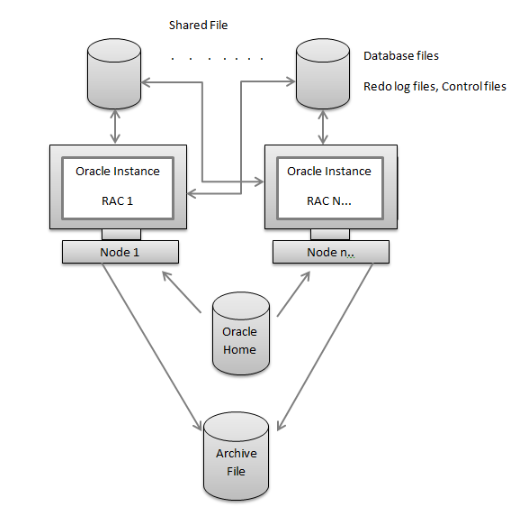
4. What is the purpose of the Clusterware in Oracle RAC?
Ans:
Clusterware in Oracle RAC is a critical component responsible for managing the entire cluster environment. It ensures high availability by monitoring the health of nodes, managing resources, and facilitating failover in case of node or instance failures.
5. How does Oracle RAC handle node evictions and reconfigurations?
Ans:
- Node evictions occur when a node becomes unresponsive or is deemed unhealthy.
- Oracle RAC automatically detects node failures and initiates a reconfiguration to adjust the cluster membership.
- The Cluster Synchronization Services (CSS) component manages the coordination of node evictions and reconfigurations.
6. How does Oracle RAC provide high availability?
Ans:
Oracle RAC achieves high availability through its distributed architecture. By spreading the database workload across multiple nodes, it reduces the risk of a single point of failure. If a node or instance fails, the workload is automatically shifted to other nodes, ensuring continuous database availability.
7. How does Oracle RAC handle transactions in a multi-node environment?
Ans:
Oracle RAC uses Global Cache Service (GCS) and Global Enqueue Service (GES) to manage distributed transactions. GCS ensures that all instances have consistent views of the data, while GES manages locks and enqueues to maintain transactional integrity.
8. Explain the concept of Oracle RAC One Node.
Ans:
Oracle RAC One Node is a feature that allows running a single-node database in RAC mode. It provides the flexibility to easily convert to a full RAC configuration when needed for increased scalability or high availability.
9. What is the purpose of the SCAN listener in Oracle RAC?
Ans:
The SCAN (Single Client Access Name) listener provides a single, consistent name for client connections to the cluster. It simplifies client configuration and load balancing by directing connection requests to the appropriate node, distributing the workload evenly.
10. What is the role of the Global Enqueue Service (GES) in Oracle RAC?
Ans:
- GES manages locks and enqueues to coordinate access to shared resources among instances.
- It ensures data consistency by preventing conflicting updates and controlling access to critical database structures.
11. How do you configure Load Balancing in Oracle RAC?
Ans:
Load balancing in Oracle RAC is achieved through connection pools and the SCAN listener. The SCAN listener directs client connections to the least loaded instance, ensuring even distribution of the workload across all nodes in the cluster.
12. Explain the role of Oracle Clusterware in Oracle RAC.
Ans:
Oracle Clusterware is responsible for managing cluster resources, monitoring node and network health, and handling the startup and shutdown of database instances across the cluster. It plays a crucial role in ensuring the overall stability and availability of the Oracle RAC environment.
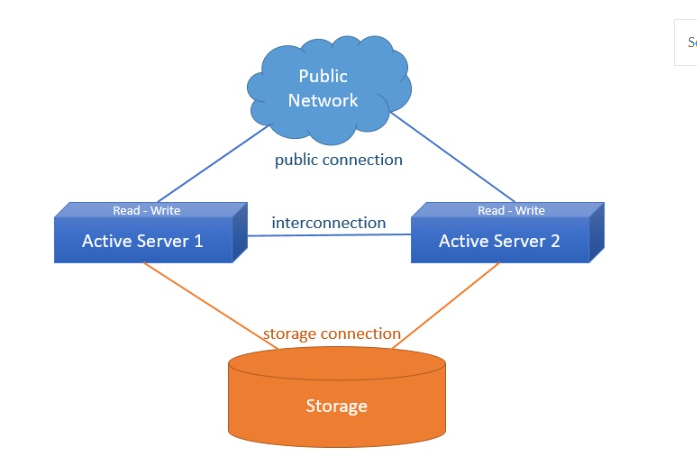
13. What is the purpose of the Voting Disk in Oracle RAC?
Ans:
The Voting Disk is a shared disk in Oracle RAC used by Oracle Clusterware to determine the membership and health of nodes in the cluster. It helps prevent split-brain scenarios by requiring a majority of nodes to be in agreement, ensuring proper cluster functioning.
14. How do you troubleshoot performance issues in Oracle RAC?
Ans:
Performance issues in Oracle RAC can be investigated using tools like Oracle Enterprise Manager (OEM), which provides detailed performance metrics. Additionally, AWR reports and tracing SQL statements for specific sessions help identify and address performance bottlenecks.
15. What is the Oracle RAC Rolling System Patch?
Ans:
- The Oracle RAC Rolling System Patch feature allows administrators to apply patches to the Oracle Grid Infrastructure across multiple nodes with minimal downtime.
- It facilitates a rolling application of patches, node by node, ensuring continuous availability during the patching process.
- The rolling approach avoids complete cluster downtime, allowing the remaining nodes to maintain cluster services.
- This feature is crucial for applying critical updates or patches to the Oracle Grid Infrastructure without affecting the overall availability of the Oracle RAC cluster.
- It streamlines the patching process and supports a more efficient and controlled deployment of updates in a clustered environment.
16. Explain the concept of Quorum in Oracle RAC.
Ans:
Quorum is the minimum number of voting nodes required for Oracle Clusterware to maintain cluster integrity. It prevents the cluster from splitting into separate groups, ensuring that the majority of nodes are in agreement before making critical decisions.
17. How does Oracle RAC handle data consistency in the event of a node failure?
Ans:
Oracle RAC uses a distributed cache coherency mechanism to maintain data consistency across instances. In the event of a node failure, the surviving nodes can access the latest version of a data block from their local caches, ensuring consistency.
18. What is the purpose of the Oracle Cluster Registry (OCR) in Oracle RAC?
Ans:
The OCR stores configuration information about the Oracle RAC cluster, including resource profiles, node memberships, and resource dependencies. It ensures consistency across the cluster by providing a centralized repository for cluster configuration data.
19. Explain Oracle RAC Rolling Refresh.
Ans:
- Oracle RAC Rolling Refresh is a feature for adding a new node to the RAC cluster with minimal downtime.
- It allows for the rolling replacement of nodes, refreshing the cluster configuration seamlessly.
- During a Rolling Refresh, a new node is added, and existing nodes are replaced one at a time.
- The process ensures continuous availability during the refresh by maintaining service availability on the remaining nodes.
- It is a method to expand or update the cluster without interrupting ongoing operations or causing downtime for applications.
- The Rolling Refresh feature facilitates efficient cluster maintenance and scalability in Oracle RAC environments.
20. Explain the role of the Global Resource Directory (GRD) in Oracle RAC.
Ans:
The Global Resource Directory (GRD) is a distributed directory that maintains information about the status of data blocks across all instances in Oracle RAC. It facilitates Cache Fusion by tracking the ownership and location of each data block, ensuring data consistency.
21. How do you add a node to an existing Oracle RAC cluster?
Ans:
To add a node to an existing Oracle RAC cluster, you need to install the Oracle Grid Infrastructure software on the new node, configure the network settings, and use the addNode.sh script to extend the cluster to include the new node.
22. How does Oracle RAC handle backup and recovery?
Ans:
- Oracle RAC backup and recovery operations are similar to single-instance databases.
- RMAN (Recovery Manager) is commonly used for backup and recovery tasks in Oracle RAC.
- Backups can be distributed across multiple nodes for parallelism and efficiency.
- The RAC architecture allows for simultaneous backups on different instances, reducing the overall backup time.
- Restoration and recovery procedures involve coordinating actions across all nodes to ensure consistency and data integrity.
23. What is the purpose of the Oracle RAC Listener?
Ans:
The Oracle RAC Listener is a process that manages incoming client connections to the cluster. It directs client requests to the appropriate instance based on load balancing policies, ensuring optimal utilization of resources and efficient distribution of the workload.
24. How can you monitor and manage Oracle RAC using Oracle Enterprise Manager (OEM)?
Ans:
Oracle Enterprise Manager provides a centralized management console for monitoring and managing Oracle RAC environments. It offers features such as performance monitoring, alerting, configuration management, and comprehensive reporting, making it a powerful tool for administrators to ensure the health and performance of the Oracle RAC cluster.
25. What is the purpose of OCLUMON in a cluster setup?
Ans:
The Cluster Health Monitor (CHM) archives operating system metrics in the CHM repository for every node within an RAC cluster. It records details regarding CPU, memory, processes, network, and other OS data, allowing it to later retrieve and utilize this information for troubleshooting and identifying any cluster-related issues. CHM comes as a default component in the 11gR2 grid installation. The data is preserved in the master repository and duplicated to a standby repository on a different node.
26. How does Oracle RAC handle service and application relocation during maintenance?
Ans:
- Oracle RAC provides the capability to relocate services and applications to specific instances during planned maintenance.
- This relocation is typically managed using features like Server Pools and services.
- Server Pools allow administrators to group nodes, and services can be associated with specific server pools.
- During maintenance, services can be moved to nodes within a designated server pool, ensuring continuous availability.
- The relocation process is transparent to the application, and clients can seamlessly connect to the relocated service.
- This approach enables efficient maintenance without disrupting ongoing operations or causing downtime for applications.
27. Can you explain cache fusion in simple terms?
Ans:
A RAC environment involves merging data blocks transmitted across the interconnect from remote database caches (SGA) to the local node. This process is undertaken to meet the demands of a transaction, such as DML operations or queries of the Data Dictionary.
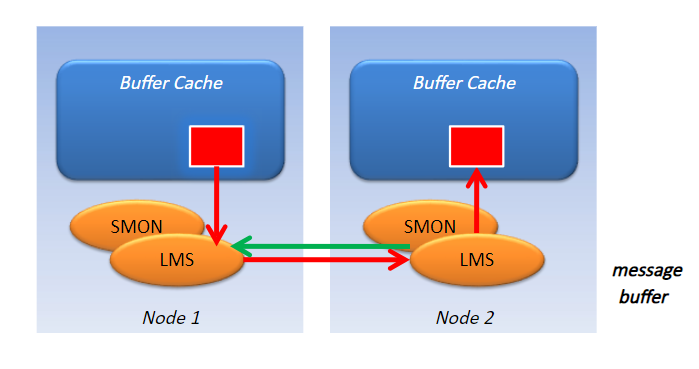
28. What does the term “split brain” mean in the context of clusters?
Ans:
When database nodes within a cluster lose communication ability, they might proceed to process and modify data blocks independently. Suppose a particular block undergoes modifications by multiple instances simultaneously. In that case, there is a lack of synchronization or locking for the data blocks, potentially leading to the overwriting of blocks by other nodes in the cluster. This scenario is referred to as a split brain.
29. How does Crash recovery differ from Instance recovery?
Ans:
In a single-node database, when an instance crashes, a crash recovery occurs during startup. In a RAC environment, the recovery process, for example, is executed by the surviving nodes, referred to as Instance recovery.
30. Why is VIP used in Oracle RAC?
Ans:
The VIP serves as an alternative Virtual IP address designated for every node within a cluster. In the event of a node failure, the VIP associated with the failed node shifts to the surviving node, notifying the application about the node’s unavailability. Without the VIP, the application would wait for TCP timeout, discovering later that the session is no longer active due to the node failure.
31. What is the purpose of Oracle RAC Server Pools?
Ans:
- Oracle RAC Server Pools allow administrators to group and manage database server nodes.
- They provide a way to allocate resources, control access, and streamline workload management within the cluster.
- Server Pools are used to enhance resource utilization, isolate workloads, and facilitate efficient maintenance activities.
32. How can you identify the database instances that belong to an RAC cluster?
Ans:
To as certain the member instances of the RAC cluster, you can perform a query on the V$ACTIVE_INSTANCES view.
33. What is the role of OCLUMON in a cluster setup?
Ans:
The OCLUMON, or Oracle Cluster Health Monitor, is a repository for storing essential operating system metrics related to all nodes in an RAC cluster. These metrics encompass information on CPU usage, memory consumption, processes, network activity, and other OS data. This stored information becomes valuable for troubleshooting and identifying any cluster-related issues. OCLUMON is automatically integrated into the 11gR2 grid installation, with data stored in the master repository and replicated to a standby repository located on a different node.
34. Which files can be placed in an ASM diskgroup?
Ans:
In 11g:
ASM diskgroups can accommodate datafiles, redo logfiles, and spfiles.
In 12c:
Additional files, such as password files, can also be stored within the ASM disk group.
35. How does Oracle RAC manage and distribute SQL statements across instances?
Ans:
- SQL statements are distributed using the Global Cache Service (GCS) to maintain data consistency.
- Each instance is responsible for executing its portion of the distributed SQL statement.
36. What is ASM POWER_LIMIT, and how does it function?
Ans:
ASM POWER_LIMIT is a parameter that controls the number of allocation units the ASM instance aims to rebalance at any given time. In versions before 11.2.0.3, the default value is 11, but it has been changed to unlimited in later versions. This parameter influences the ASM instance’s efforts to rebalance storage, enhancing efficiency.
37. Define a rolling upgrade.
Ans:
A rolling upgrade refers to a patch or upgrade applied to cluster binaries in an RAC environment without necessitating a database shutdown. In a rolling upgrade, each node in the cluster is sequentially patched one by one, ensuring that only the specific node being patched is temporarily unavailable while all other instances remain open.
38. Name some RAC – specific parameters.
Ans:
Several RAC-specific parameters include,
- CLUSTER_DATABASE
- REMOTE_LISTENER
- INSTANCE_NUMBER
- UNDO_TABLESPACE
- ACTIVE_INSTANCE_COUNT
- INSTANCE_GROUPS
- INSTANCE_NAME
39. What is the future outlook for the Oracle Grid?
Ans:
The Oracle Grid is evolving to support high availability for Oracle Databases and various applications, including Oracle’s own applications. With advancements like those introduced in version 12c, the Grid software offers more built-in features and functionality, making it easier to deploy pre-built solutions tailored for typical Oracle applications.
40. Explain the concept of affinity-based connection load balancing in Oracle RAC.
Ans:
- Affinity-Based Connection Load balancing allows administrators to influence connection routing based on client attributes.
- It enhances control over how connections are directed to specific instances, optimizing resource utilization and balancing the workload.
41. Explain the concept of split brain syndrome in RAC.
Ans:
In Oracle RAC, split brain syndrome occurs when instances or servers fail to communicate with each other via a private network. This leads to instances independently processing data blocks, which can result in data integrity issues.
42. What are the consequences of leaving split brain syndrome unresolved, and how can it be resolved?
Ans:
If split brain syndrome is not addressed, it may lead to data integrity problems, with changes made in one instance being susceptible to overwriting by another. Resolution involves using the voting disk, which determines surviving nodes and those to be evicted.
43. What is Oracle RAC Quality of Service Management (QoS)?
Ans:
- Oracle RAC Quality of Service Management (QoS) is a feature that allows administrators to prioritize resource allocation for critical workloads.
- It ensures that essential applications receive the necessary resources to meet performance objectives.
- QoS enables administrators to define policies specifying the importance of different workloads or services.
- The system dynamically allocates resources based on these policies, ensuring that high-priority workloads receive preferential treatment.
- This feature contributes to better workload management, performance optimization, and efficient utilization of resources in Oracle RAC environments.
44. How can you determine the protocol used for Interconnect traffic?
Ans:
To identify the protocol used for Interconnect traffic, inspect the database alert log during the startup period.
45. What tools does Oracle Enterprise Manager provide?
Ans:
Oracle Enterprise Manager offers two main tools: Grid Control, which delivers centralized management, and Database Control, a graphical management tool for configuring databases, managing Oracle RAC-related services, and overseeing server pools created with Oracle Clusterware.
46. What are Oracle RAC One Node Conversions, and when would you use them?
Ans:
- Oracle RAC One Node Conversions allow transitioning from a single-node Oracle RAC One Node database to a full RAC configuration.
- This conversion is beneficial when additional nodes are needed for increased scalability or high availability.
47. What should be done if the Oracle Cluster Registry (OCR) is corrupted?
Ans:
If the OCR is corrupted, the logical or physical OCR backup copy can be used to restore the repository.
48. Explain the concept of Oracle Local Repository (OLR).
Ans:
OLR, or Oracle Local Repository, contains information enabling cluster programs to initiate with the OCR in the ASM Storage. It serves as a local copy of OCR data when the grid processes are commenced before the ASM file becomes available.
49. Discuss Oracle Enterprise Manager (OEM) tools.
Ans:
Oracle Enterprise Manager comprises two tools:
Database Control, which is a graphical management tool for manual database configurations.
Grid Control, which offers centralized management, administration, and configuration capabilities for efficient and cost-effective plans.
50. What is the ASM Metadata backup technique?
Ans:
The command ‘md_backup‘ is used to perform an ASM metadata backup. It is utilized to restore disk group-based configurations in case of storage loss for an ASM disk group.
51. Elaborate on the use of interconnect in Oracle RAC.
Ans:
Interconnect is employed in Oracle RAC to facilitate the sharing of data blocks across instances through cache fusion. It enables the sharing of data dictionary and physical blocks.
52. Name the files in the shared storage of RAC, and how would you monitor the protocol for interconnect traffic?
Ans:
Shared storage in RAC includes,
- Control files
- spfiles
- redo log files
- datafiles
Monitoring the protocol for interconnect traffic involves closely examining the database alert log during the startup period.
53. What is the purpose of Oracle Flex Cluster Hub Nodes?
Ans:
- Hub Nodes in Oracle Flex Clusters manage shared resources such as the Global Resource Directory (GRD) and the Oracle Cluster Registry (OCR).
- They play a central role in coordinating and distributing cluster-wide information.
54. Difference between Oracle RAC and Oracle Grid.
Ans:
| Aspect | |||
| Definition | Oracle Real Application Clusters | Oracle Grid Infrastructure | |
| Purpose | Provides clustered database solutions | Infrastructure for various Oracle software components (e.g., databases, middleware) and services | |
| Scope | Primarily focused on clustered databases | Encompasses a broader set of Oracle products and services across the enterprise | |
| Key Component | Database instances running on multiple nodes | Grid Infrastructure includes Oracle Clusterware and ASM | |
| Use Case | Optimized for high availability and scalability of database workloads | Manages resources and services in a scalable, consolidated infrastructure for various applications | |
| Resource Management | Focuses on managing database instances, connections, and shared resources | Manages a variety of resources, including databases, application servers, and other components | |
| Clusterware Component | Includes Oracle Clusterware for managing cluster operations | Oracle Clusterware is a key component for overall infrastructure management |
55. What are Oracle Kernel Components, and how does Oracle RAC differ from a single-instance database in terms of binaries and processes?
Ans:
Oracle Kernel Components need to be switched on with RAC for enabling specific RAC background processes like LMON, LCK, LMD, LMS, etc. Oracle RAC consists of two or more instances, each having memory structures and background processes similar to a single-instance database. Oracle RAC instances use GES (Global Enqueue Service) and GCS (Global Cache Service) processes for cache fusion.
56. What is the difference between crsctl and srvctl?
Ans:
‘crsctl‘ is used for managing clusterware-related operations, such as starting and stopping Oracle Clusterware, enabling and disabling Oracle Clusterware daemons, and registering cluster resources. On the other hand, ‘srvctl‘ is employed for Oracle resource-related operations, including starting and stopping database instances and services, and managing cluster resources like network.
57. Explain the concept of Oracle Flex ASM in Oracle RAC.
Ans:
- Oracle Flex ASM extends the benefits of Oracle Automatic Storage Management to Oracle RAC environments.
- It enables dynamic resizing of ASM clusters to accommodate changes in workload and storage requirements.
- Flex ASM simplifies administration by allowing nodes to share ASM instances, improving flexibility and resource utilization.
58. How can Oracle Cluster Ware be controlled?
Ans:
To start or stop Oracle Cluster Ware on a specific node, the commands ‘crsctl stop crs‘ and ‘crsctl start crs‘ are used.
59. What is the purpose of the Oracle RAC Database Resource Manager?
Ans:
The Oracle RAC Database Resource Manager is responsible for managing and allocating resources among multiple instances in a cluster. It ensures that each instance gets a fair share of CPU and I/O resources, preventing any single instance from monopolizing resources and degrading the performance of other instances.
60. What is the purpose of the Oracle RAC Rolling Upgrade feature?
Ans:
The Oracle RAC Rolling Upgrade feature allows administrators to upgrade Oracle RAC databases without downtime. It involves upgrading individual nodes one at a time while the rest of the cluster remains operational, ensuring continuous availability during the upgrade process.
61. Explain Oracle RAC Local Listener.
Ans:
- The Oracle RAC Local Listener is a process running on each node in a cluster.
- It registers local instances with the Oracle RAC cluster.
- Facilitates efficient communication and connection management within the local node.
- Acts as a listener for local connections to database instances on the same node.
- Ensures that local instances can communicate seamlessly within the cluster.
62. Explain the significance of the OCR Mirror in Oracle RAC.
Ans:
The OCR Mirror serves as a redundant copy of the Oracle Cluster Registry (OCR). Providing an additional layer of fault tolerance enhances the availability of OCR, which is critical for storing configuration information about the Oracle RAC cluster.
63. How does Oracle RAC handle global sequence numbers to maintain uniqueness across instances?
Ans:
Oracle RAC uses the Sequence Cache feature, where each instance caches a range of sequence numbers locally. This minimizes the need for inter-instance communication during sequence generation, ensuring that each instance can generate unique sequence numbers without contention.
64. What is the purpose of the Dynamic Database Services in Oracle RAC?
Ans:
Dynamic Database Services in Oracle RAC allow administrators to create services that dynamically adapt to changes in the cluster configuration. This provides flexibility in workload management and resource allocation, allowing for efficient utilization of cluster resources.
65. Explain the role of the Oracle RAC Connection Load Balancing Advisory.
Ans:
The Connection Load Balancing Advisory assists in distributing connections evenly across instances in Oracle RAC. By providing information on the current load of each instance, clients can use this advisory to make informed decisions about which instance to connect to, optimizing resource utilization.
66. How can you perform workload balancing in Oracle RAC using services?
Ans:
Workload balancing in Oracle RAC is achieved by defining services with preferred and available instances. Clients can connect to the preferred instance, and in case of failure, the connection is automatically redirected to an available instance, ensuring even distribution of the workload.
67. What is the purpose of Oracle RAC Database Services?
Ans:
- Oracle RAC Database Services define the different ways users can connect to the database.
- They help in workload management by grouping connections and allocating resources.
- Services facilitate high availability by allowing connections to be redirected in case of instance or node failures.
68. What is the purpose of the Cluster Health Monitor (CHM) in Oracle RAC?
Ans:
The Cluster Health Monitor continuously monitors the health of the Oracle RAC cluster by collecting and analyzing performance and health-related data. It provides valuable insights into the overall health of the cluster, helping administrators identify and address potential issues proactively.
69. Explain the role of the Fast Application Notification (FAN) in Oracle RAC.
Ans:
Fast Application Notification (FAN) enables applications to receive immediate notification of certain events, such as instance or node failures. This allows applications to respond quickly to changes in the cluster environment, facilitating better management of connections and resources.
70. What is Oracle RAC Policy-Managed Database?
Ans:
- Oracle RAC Policy-Managed Database enables administrators to define performance and resource allocation policies for database services.
- It automates the management of resources based on predefined policies, optimizing performance and ensuring efficient resource utilization.
- Policies include rules for instance placement, automatic workload management, and dynamic resource adjustments.
71. How does Oracle RAC handle contention for resources among instances, and what is the role of Global Enqueues?
Ans:
Oracle RAC uses Global Enqueues to manage contention for resources, such as locks. These enqueues help coordinate access to shared resources among instances, preventing conflicts and ensuring data consistency across the cluster.
72. What is the purpose of the Oracle RAC Database Rolling Patch and Rolling Patch Plan features?
Ans:
The Database Rolling Patch feature allows administrators to apply patches to an Oracle RAC database with minimal downtime. The Rolling Patch Plan assists in orchestrating the patching process across multiple nodes, ensuring a smooth and controlled patch deployment.
73. Explain Oracle Flex Clusters.
Ans:
Oracle Flex Clusters introduce a flexible architecture with Hub Nodes and Leaf Nodes. Hub Nodes manage shared resources, while Leaf Nodes are dedicated to specific workloads. This architecture provides scalability and resource allocation flexibility, allowing for a more tailored approach to cluster design.
74. How does Oracle RAC manage and distribute redo log entries across instances?
Ans:
- Oracle RAC uses a mechanism known as Cache Fusion for distributing redo log entries.
- Cache Fusion allows instances to share and exchange modified data blocks in the buffer cache directly, minimizing disk I/O.
- Redo log entries generated by one instance are broadcasted and applied to the relevant blocks on other instances, ensuring data consistency across the cluster.
75. How does Oracle RAC handle data consistency during write operations, and what is the role of the Global Cache Service (GCS)?
Ans:
During write operations, Oracle RAC ensures data consistency through the Global Cache Service (GCS). GCS coordinates the management of data blocks by maintaining a global resource directory, which tracks the ownership and status of each data block across all instances.
76. What is the purpose of the Oracle RAC Database Rolling Upgrade Out of Place feature?
Ans:
The Rolling Upgrade Out of Place feature allows administrators to perform a rolling upgrade of an Oracle RAC database by creating a new Oracle home and database while the existing one remains operational. This ensures minimal downtime and a smooth transition to the upgraded environment.
77. Explain the concept of the Oracle Cluster Health Advisor in Oracle RAC.
Ans:
The Oracle Cluster Health Advisor continuously monitors the cluster’s health and provides proactive recommendations to address potential issues. It assists administrators in maintaining a stable and high-performing Oracle RAC environment by offering insights and suggested corrective actions.
78. How does Oracle RAC manage the voting mechanism in a cluster, and what is the Quorum Disk?
Ans:
Oracle RAC uses a voting mechanism to prevent split-brain scenarios. The Quorum Disk, a shared disk, contributes to the voting process by helping determine the majority of nodes. It plays a crucial role in ensuring proper cluster functioning by avoiding conflicts and maintaining cluster integrity.
79. What is the significance of the Oracle RAC Multi-Instance Redo Log feature?
Ans:
- Multi-Instance Redo Log enables instances to write to multiple redo log groups concurrently, improving performance.
- It reduces contention for the redo log and enhances scalability in write-intensive workloads in Oracle RAC.
80. What is the purpose of the Oracle RAC Wait Events in performance tuning?
Ans:
Oracle RAC Wait Events provide detailed information about the reasons for performance bottlenecks. By analyzing these events, administrators can identify resource-intensive operations, monitor wait times, and take corrective actions to optimize the performance of the Oracle RAC database.
81. Explain the concept of the Oracle RAC Database Rolling Downgrade.
Ans:
- Rolling Downgrade allows administrators to revert an Oracle RAC database to a previous release without downtime.
- It involves downgrading individual nodes one at a time while the rest of the cluster remains operational.
82. What is Oracle RAC Direct NFS (dNFS)?
Ans:
Oracle RAC Direct NFS (dNFS) is a feature enhancing I/O performance in Oracle RAC environments. It enables direct communication between database instances and NFS storage servers. By bypassing the operating system’s NFS client, dNFS reduces I/O latency and improves overall storage efficiency. It enhances scalability and performance by optimizing the interaction between Oracle RAC nodes and NFS storage.
83. What is Oracle RAC Transparent Application Failover (TAF)?
Ans:
- Oracle RAC Transparent Application Failover (TAF) ensures automatic reconnection of clients to surviving instances in the event of an instance or node failure.
- TAF enables seamless failover without requiring intervention from the application or end-users.
- Applications configured with TAF can automatically switch to another available instance, maintaining continuous database access.
- It improves application resilience by reducing downtime and providing uninterrupted service during planned or unplanned outages.
- TAF settings are typically configured at the application or connection level to enable automatic failover capabilities in Oracle RAC environments.
84. Explain Oracle RAC Trace File Analyzer (TFA).
Ans:
- Oracle RAC Trace File Analyzer (TFA) is a diagnostic tool designed to automate the collection and analysis of diagnostic data from Oracle RAC environments.
- TFA simplifies the troubleshooting process by automatically gathering logs, traces, and other diagnostic information.
- It provides a centralized location for storing diagnostic data, making it easier for administrators to analyze and share information.
- The tool can be configured to proactively monitor and capture diagnostic information, aiding in the identification and resolution of issues.
- TFA contributes to a more efficient and streamlined approach to diagnosing and resolving problems in Oracle RAC environments.
- It helps administrators quickly assess the health of the cluster and address potential issues with minimal manual intervention.
85. Explain the concept of Oracle RAC Connection Affinity.
Ans:
Oracle RAC Connection Affinity allows administrators to configure preferred instances for specific services. Clients can connect to these preferred instances, optimizing resource utilization and enhancing connection efficiency. This feature provides greater control over how client connections are distributed across the Oracle RAC cluster, contributing to improved performance and resource management.
86. What is the purpose of the Oracle RAC Daemon (oraagent) in managing resources within the cluster?
Ans:
The Oracle RAC Daemon (oraagent) is a clusterware component responsible for managing resources associated with Oracle RAC. It monitors the status of resources, performs resource health checks, and ensures proper resource allocation within the cluster. Oraagent plays a crucial role in maintaining the availability and health of resources, including database instances, services, and listeners.
87. What types of storage are suitable for RAC database storage?
Ans:
- Network-Attached Storage (NAS)
- Storage Area Network (SAN)
- Oracle ASM (Automatic Storage Management)
88. What does OCFS2 stand for, and what is its purpose?
Ans:
OCFS2, or Oracle Cluster File System 2, is a file system specifically designed for clustering environments. It facilitates shared storage access among nodes in a cluster, allowing them to concurrently read and write data. OCFS2 is particularly useful in Oracle RAC (Real Application Clusters) configurations, providing a shared file system that enables seamless collaboration and data consistency across multiple nodes within the cluster.
89. Is SSH or RSH necessary for routine Oracle RAC operations?
Ans:
No, SSH (Secure Shell) or RSH (Remote Shell) is not typically required for normal Oracle RAC operations. Oracle RAC primarily relies on the clusterware infrastructure and communication mechanisms internal to the cluster for coordinating activities among nodes. SSH or RSH may be utilized for administrative tasks, but they are not integral to the regular functioning of Oracle RAC in managing the cluster and processing database transactions.
90. What types of files are suitable for storage on Linux OCFS2?
Ans:
Linux OCFS2 is suitable for hosting a variety of file types, including regular data files, system files, and application files. It is particularly well-suited for shared storage environments in a cluster, facilitating concurrent access to files across multiple nodes. OCFS2 supports a range of file formats and is commonly used for hosting Oracle Clusterware files, Oracle Database files, and other types of data and configuration files in clustered Linux environments.


